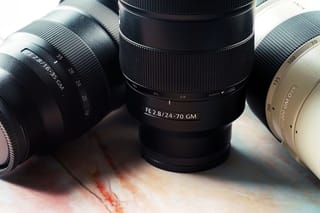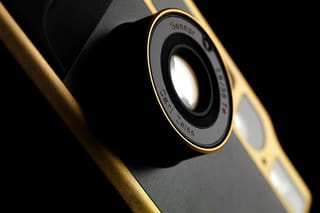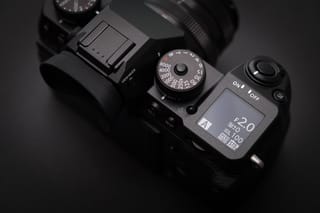You may have seen our abbreviation or exceptions lists before. They simply tell what an abbreviation we use stands for, and what defines an exception. For example, the abbreviation list says that AIJ means “All in Japanese”. But what does that really mean? This is where we are going to break down a few of the more complicated words or phrases and define them further for you…
All In Japanese (AIJ)– This means that the camera menu defaults to the Japanese language. You can switch it to English, but when the battery is removed or the camera is reset, chances are that it will switch back to Japanese. This item was originally sold to an Asian market.
Non US– This term relates to its original origin of sale. When an item is sold new, under warranty it must be repaired in its area of origin. An example would be Europe. If it was sold new in that area, it must be repaired in that area. When the item is sold used, then that no longer applies except when it comes to sending a repair to the manufacturer. Nikon or Canon will not repair a “non US” camera, but KEH will.
Non Manufacturer (non-mfg)– Non-mfg stands for non-manufacturer. Lenses under these categories would be for a specific mount, but made by another company. For example, a non-mfg lens under the Canon category would be a lens made by Tokina, Tamron, Sigma, etc. and not a Canon brand lens.
Front Ring Damage (FRD)– This can mean anything from a dent or crack in the filter ring, to a portion of the front ring that is missing. This could be any type of damage that occurs around the filter ring of a lens.
Engraved (ENGR)– Any type of engraving found anywhere on the item. This could be something scratched on with an engraving tool or other sharp object. While this isn’t so much common practice now, many people used to engrave their names or social security numbers into their cameras. This also includes any markings that are obliterated, like the product name.
Inoperative (INOP)– The item does not work properly. It may be a total failure or have many small problems, i.e. shutter speeds are off and flash won’t fire from the hot shoe, or camera has no function at all.
Rangefinder off (RF off)– A rangefinder is a device that measures distance from the observer to a subject. Rangefinder cameras do not focus through the lens like SLR cameras do. It’s usually built into the camera (as in 35mm), but not always (as in large format), and is coupled to the lens. Most show two images of the same subject, one of which moves when either a calibrated wheel or the lens barrel is turned. When the two images align and converge into one, the subject is in focus. If the images are not aligned either top to bottom or side to side, the rangefinder is off and will cause your image to be out of focus.
Zoom loose (ZM loose)- When a zoom lens can’t hold its focal length if the lens is pointed up or down, we call that a loose zoom.
Aspherical (ASPH)– This is a lens whose surfaces has a profile that is neither a portion of a sphere nor of a circular cylinder. The asphere’s more complex surface profile can eliminate spherical aberrations and reduce optical aberrations compared to a simple lens, and can often replace a much more complex multi-lens system. The resulting lens is also smaller and lighter.
Bayonet mount (BAY)– Refers either to how the lens mounts onto a camera body or how a lens shade mounts onto the front of the barrel. This mount has multiple “tab like” parts that click into place.
Screw mount (SM)– Many early 35mm cameras like Pentax and Leica used lenses that screwed on to the camera. This mount has threads like a screw.
Breech lock (BL)– Early Canon manual lenses use what is referred to as a breech lock system to attach to the camera body. It was a chrome ring that turned to lock the lens on. Later manual focus lenses used an FD lock, which was a silver button near the mount.
Bounce (BNC), Swivel (SWVL), Zoom (ZM)– Refers to any type of flash, hot shoe or bracket mounted, that has a head that can tilt upwards or “bounce” from 180 degrees to 90 degrees, “swivel” from side to side, and “zoom” from 24mm to 105mm.
Buffer upgrade (BU)– Buffer size is important for photographers that take picture sequences. For example, during an action sequence, with a Nikon D1X used in C mode you can shoot pictures at the rate of up to three (3) per second (actual rate will vary with shutter speed in use and/or a camera custom setting selection). During picture taking, photos are temporarily stored in the camera’s memory buffer, which holds a maximum of nine photographs at any given moment (again, capacity varies with file type and other conditions). Once the buffer fills, picture taking will pause until the buffer has passed images through the memory card and space-available resumes. Upgrading the buffer will allow more images to be stored at once. A camera that comes with a BU has already had a buffer upgrade performed.
Film Only (FO)– Film only refers to what a lens is compatible with. When digital cameras first came out, not all auto-focus lenses were compatible with them. Some lenses, particularly after market lenses, were suitable only for film cameras.
Guide Number (GN)– The guide number for an electronic flash measures its ability to illuminate the subject to be photographed at a specific film or sensor sensitivity and angle of view. A higher guide number indicates a more powerful flash.
Internal focus (IF)- A lens whose helical focus does not rise and fall, but rather focuses internally.
Universal (UNIV)– Works with multiple items. A universal screw mount lens will work on the Leica screw mount, Canon Rangefinder, and Nikon Rangefinder cameras. A universal charger will charge many different kinds of batteries.
-Chris Brooks




